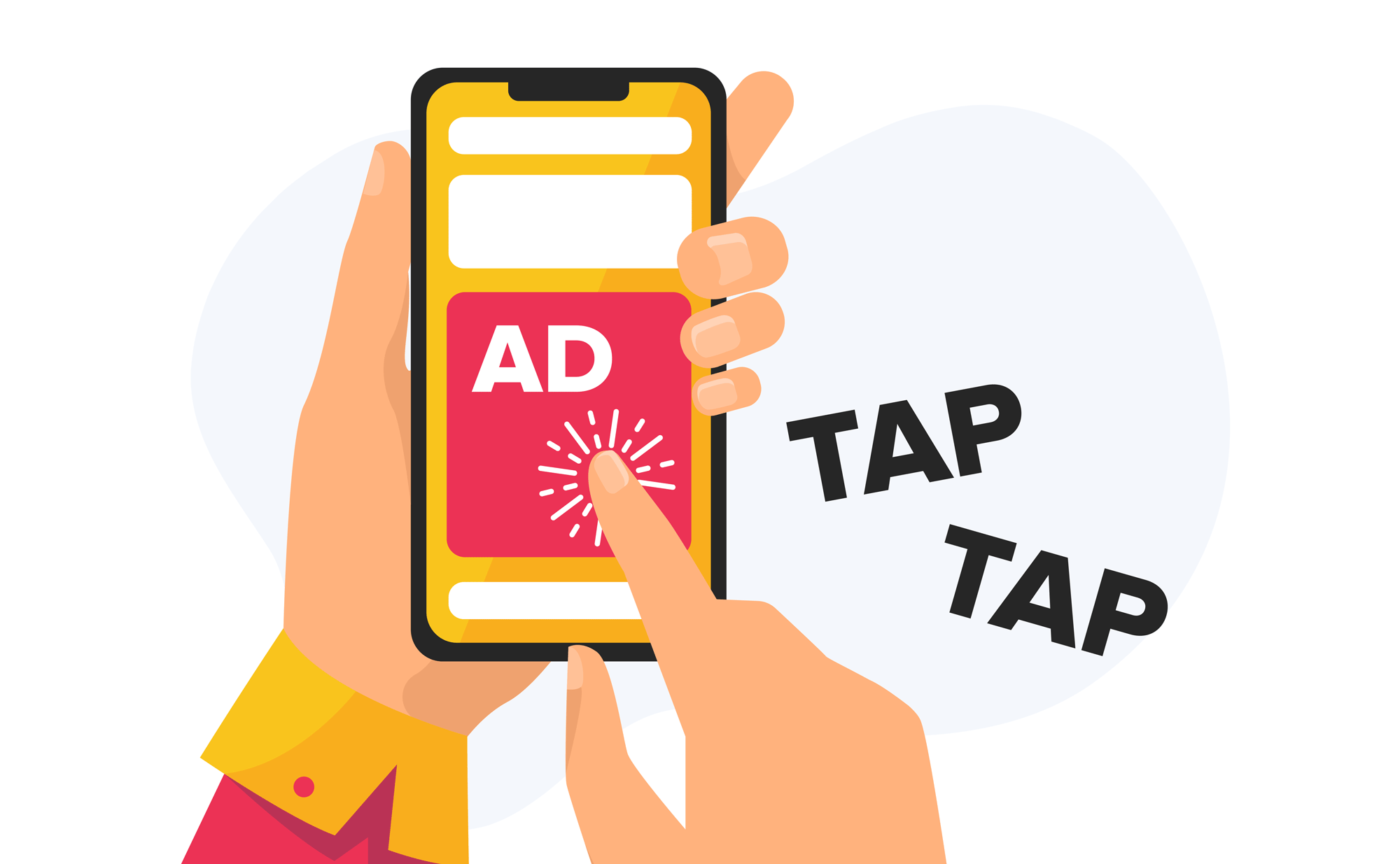Reflecting On 2024 – Expert Insights on the Programmatic Industry
As the digital advertising landscape continues to evolve, programmatic advertising remains at the forefront of innovation, shaping the way brands…

It appears unexpectedly, without prior notifications, and can significantly reduce the results of high-earning ad units for an undefined period of time. Can publishers avoid the unpleasant consequences of Google’s Two-Click Penalty? Yes, but it requires understanding the reasons why Google imposes this sanction. Learn how to minimize the risk and how to react if the Confirmed Click filter is applied to your inventory.
Google’s Two-Click Penalty is a measure aimed at preventing inappropriate and accidental clicks on ad units. Accidental and invalid clicks are detrimental to Google’s advertising activity, and this is because accidental clicks do not affect user purchase. Despite this, the Advertiser still has to pay for such clicks.
How does the Confirmed Click filter show up on the website? When a user clicks on an ad unit, the Visit site overlay appears. Only after the second click will the user be redirected to the place visible on the ad. Before this penalty was imposed, the user had been redirected immediately. An example of a unit that has this penalty is shown below.

What is really tricky about Two-Clicks Penalty and Confirmed Click filter? Usually, in the case of problems with the policy or invalid traffic, Publishers are informed by Google via e-mail or in Google Ad Manager, and the appropriate steps are taken. With the Two-Click Penalty there is no such notification. Moreover, there is no information as to what steps the Publisher should take in order to avoid applying a Confirmed Click filter. This is a perilous situation as it often happens unexpectedly and may last an indefinite period of time.
This filter is most often found on mobile units that have a higher-than-average CTR level, which means that the units are more clickable by users. If an individual is clickable too often, Google’s algorithm may decide that the clicks are inappropriate and apply a filter. High CTRs are usually considered to be those that approach 1%.
The most common causes of a higher-than-average CTR are:
When ads on a page are arranged close to buttons, navigation bars, or widgets, this may cause a user to accidentally click on an ad unit.
“Jumping” content on the website
A very common reason for applying the Confirmed Click filter, is when the content jumps on the page, i.e., when moving the bar the unit jumps higher, so the user may accidentally click on it. This situation most often occurs with Publishers who have trouble placing the unit in the page code.
Drawing unnatural attention to ads
Two-Click Penalty can also be the result of using tricks that draw unnatural attention to ads. Such trick can be e.g. clickbait messages “Click now”, “Click and earn money”, “Recommended”, graphic elements (directional arrows, bright buttons) or ads that imitate content.
As mentioned earlier, applying a filter usually happens unexpectedly and immediately impacts on a Publisher’s results.
The click filter affects units, especially CTR, which is reflected in such metrics as RPM, eCPM and, above all, revenue. Below, we present data that shows how quickly the RPM reacts to the fall in CTR:

As can be seen, on the day of applying the filter, CTR dropped by as much as 65%, and this has a knock-on effect for both RPM and Revenue. The filter response is immediate, but RPM recovery may take longer. Very often, after a rebound in CTR, the RPM also increases, but there are situations where the RPM does not return to its previous level. Interestingly, the unit affected by the filter here does not have such a high CTR.
First of all, check carefully which units are showing a decrease in metrics. Then verify that the units that scored lower have a visible overlay on the page that forces users to double-click.
Publishers are looking to counteract Google’s Two-Click Penalty in many ways. Our key recommendations are:
Add filling at the top and bottom of the advertising boxes, as well as margins in particular in the case of In-feed or In-article ads, as well as sticky ads.
Clearly label ads on the site that they are not considered content.
Add sticky formatting to avoid unit jumping.
Move the ad away from navigation buttons such as “Next” buttons or clickable content on mobile sites.
Correct the ad unit container size so that it does not move the site content away while loading.
Improve the mobile page latency on your website. This is important because slow speed contributes to the slow loading of ad units; and then unexpected ‘pop ups’ while scrolling the page, possibly leading to accidental clicking.
Often Publishers point out that although they have followed the above-mentioned recommendations, the filter is still applied to their ad units. In such cases, it is worth reporting this to Google Support so that they can verify matters on their side. In addition, it is also important to diversify Google’s share of total programming revenues, because the filter only applies to revenues from Google. Then, despite application of the filter, overall revenue will not be so adversely affected.
Google’s Two-Click Penalty is one of the more common reasons for a drop in Publisher results. It is difficult to predict and counteract, so Publishers are looking to follow Google’s recommendations when running their pages, so there is a chance that Google’s algorithms will respond to click data on their pages as little as possible. If the filter is nevertheless applied, it will be worth thoroughly analyzing which units are the most problematic, and then eliminating anything that may have contributed to the fact that the clicks were considered inappropriate.

Karol Jurga
Chief Revenue Officer
See it in action.